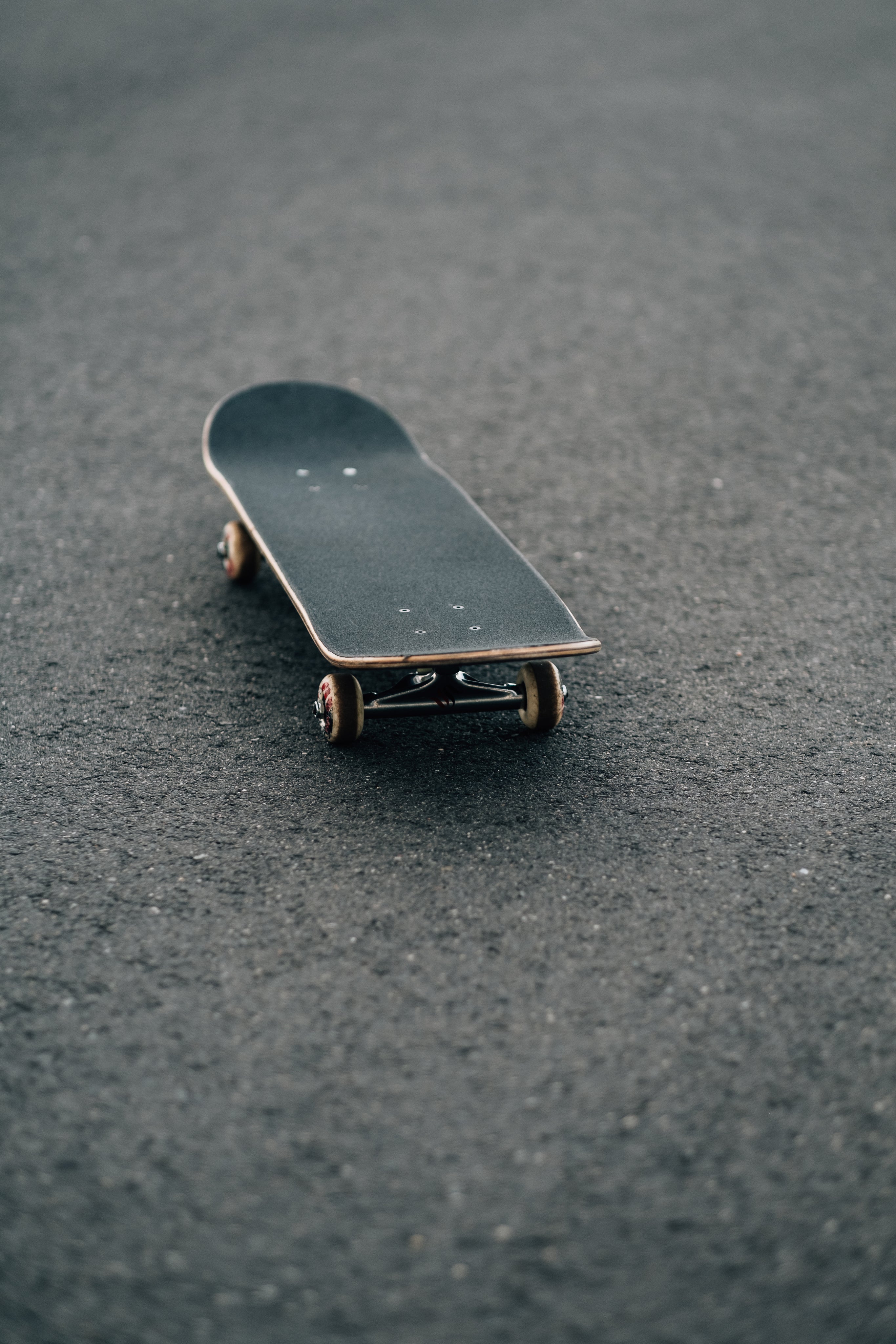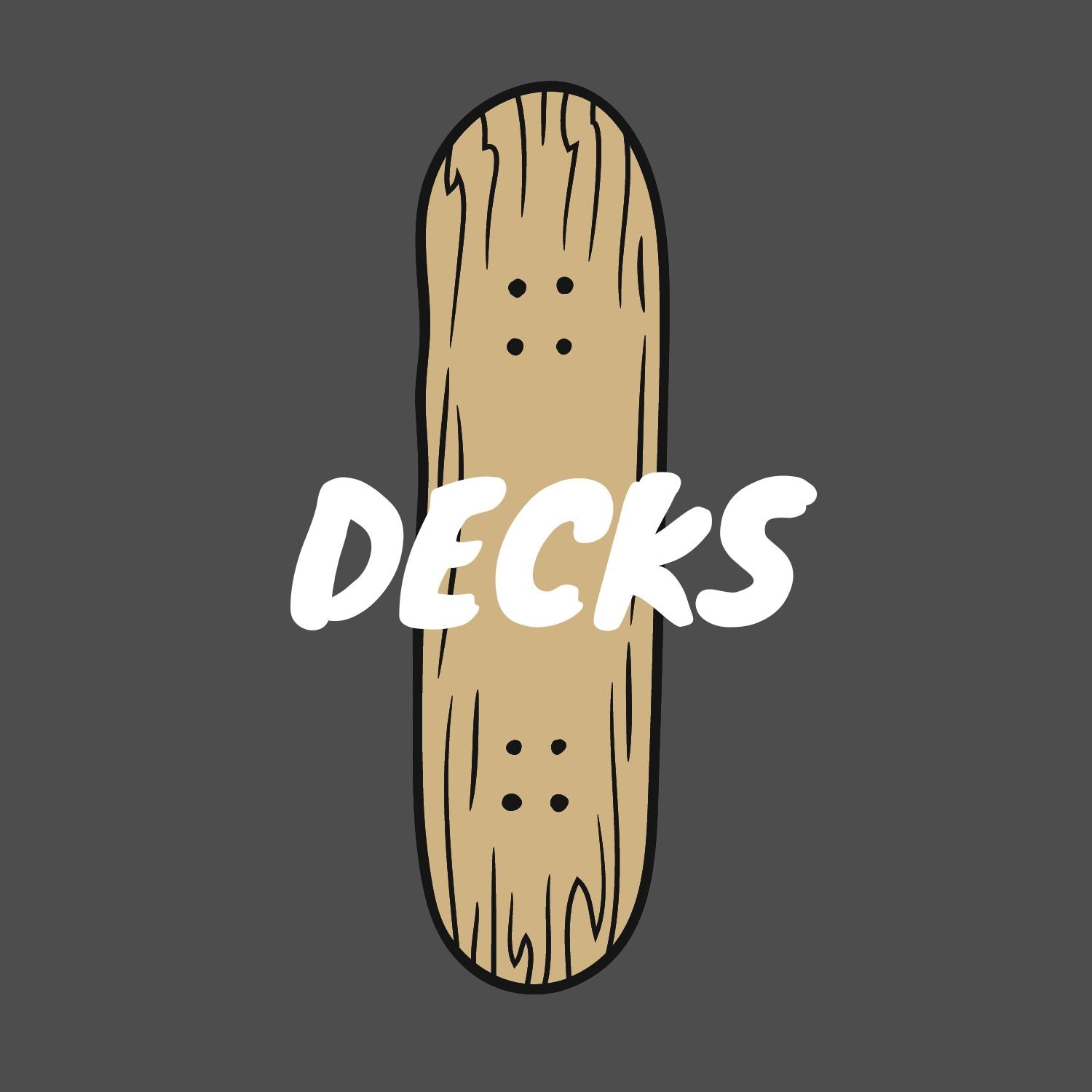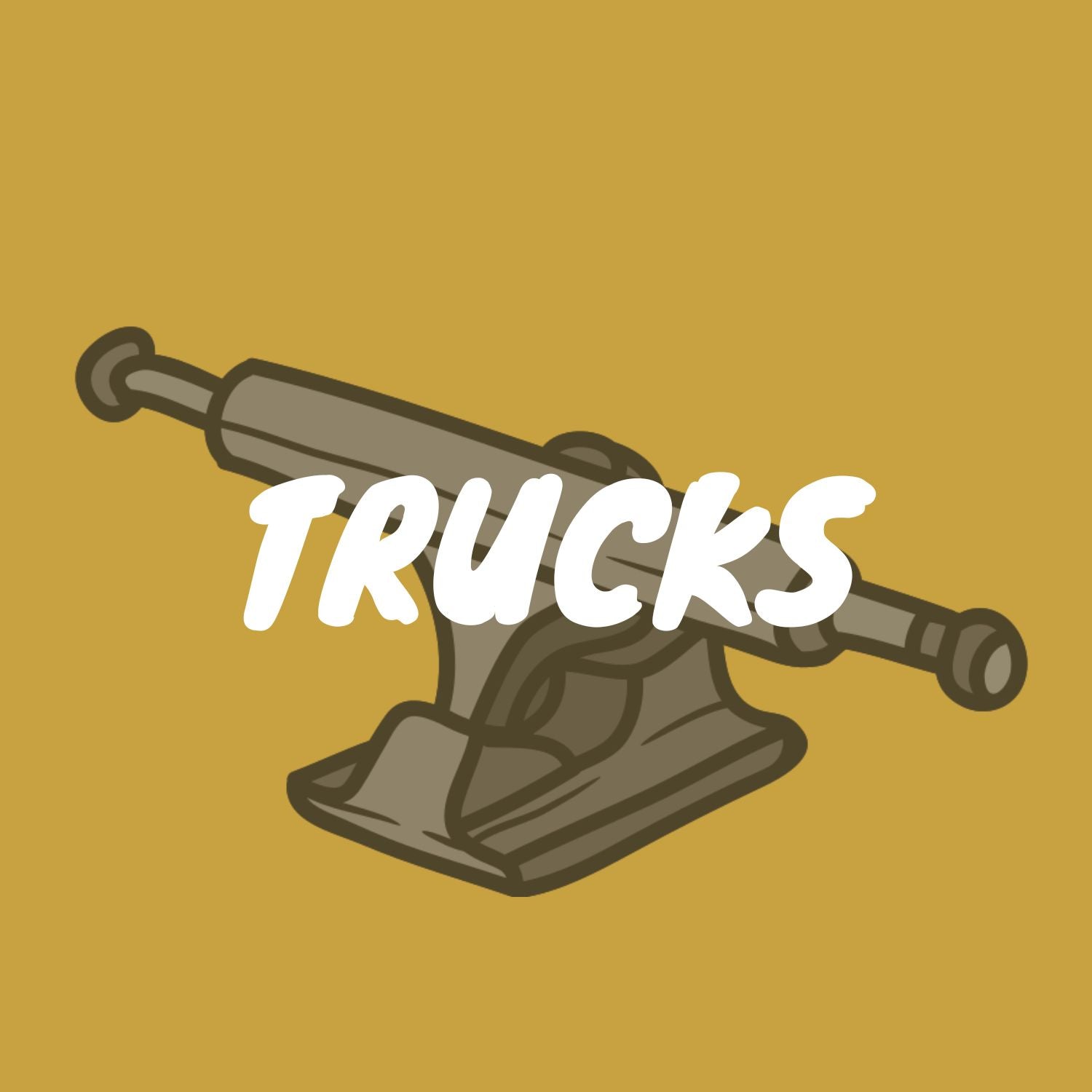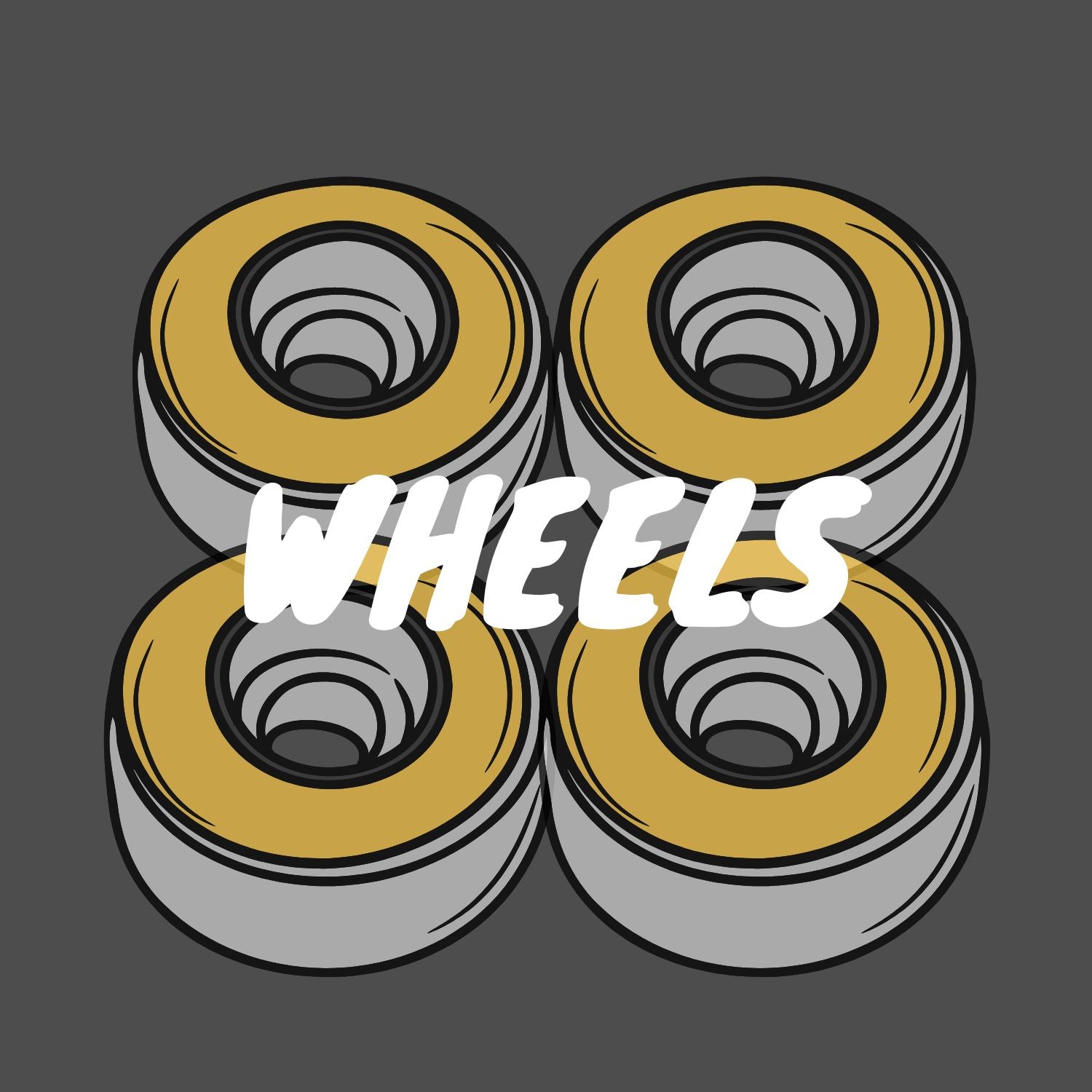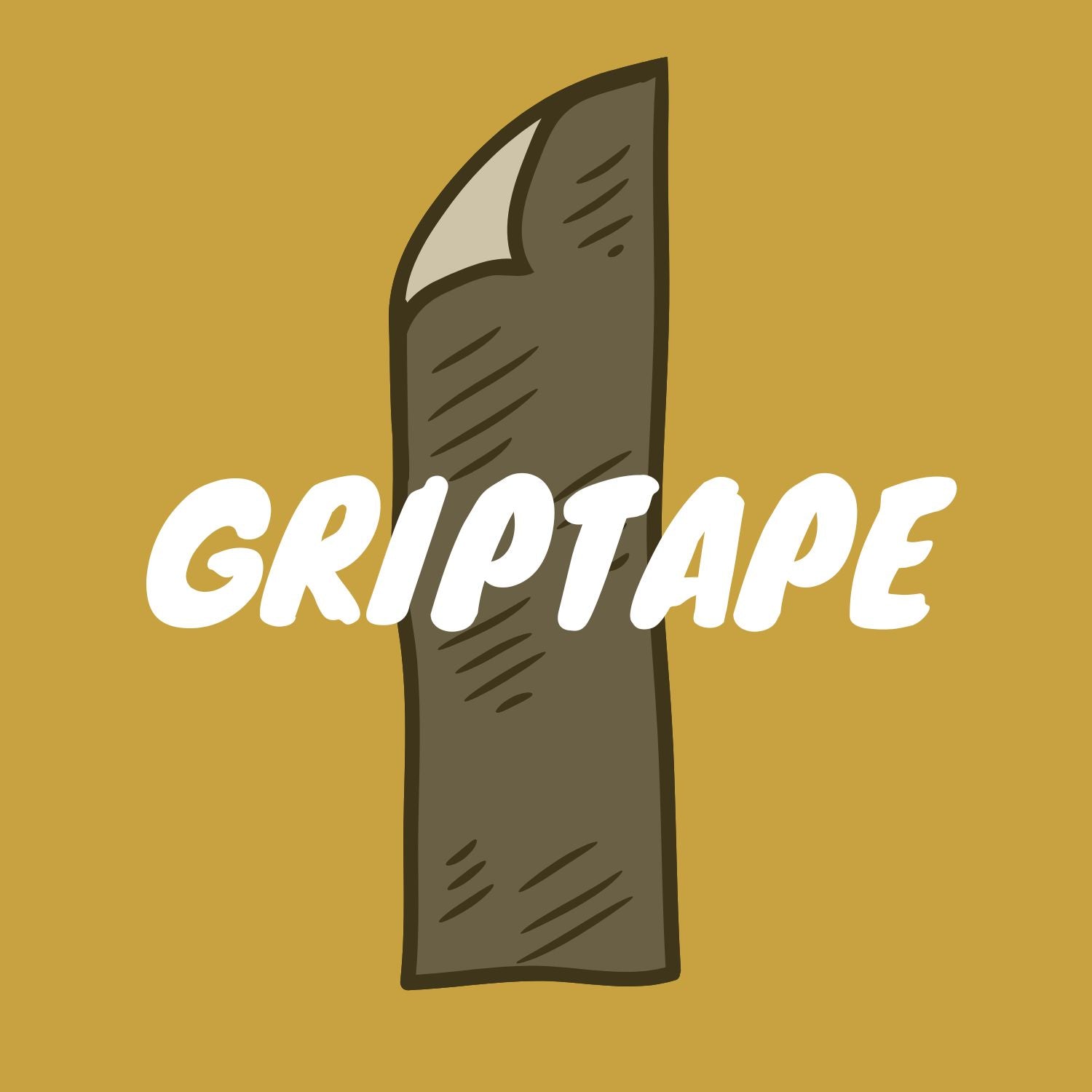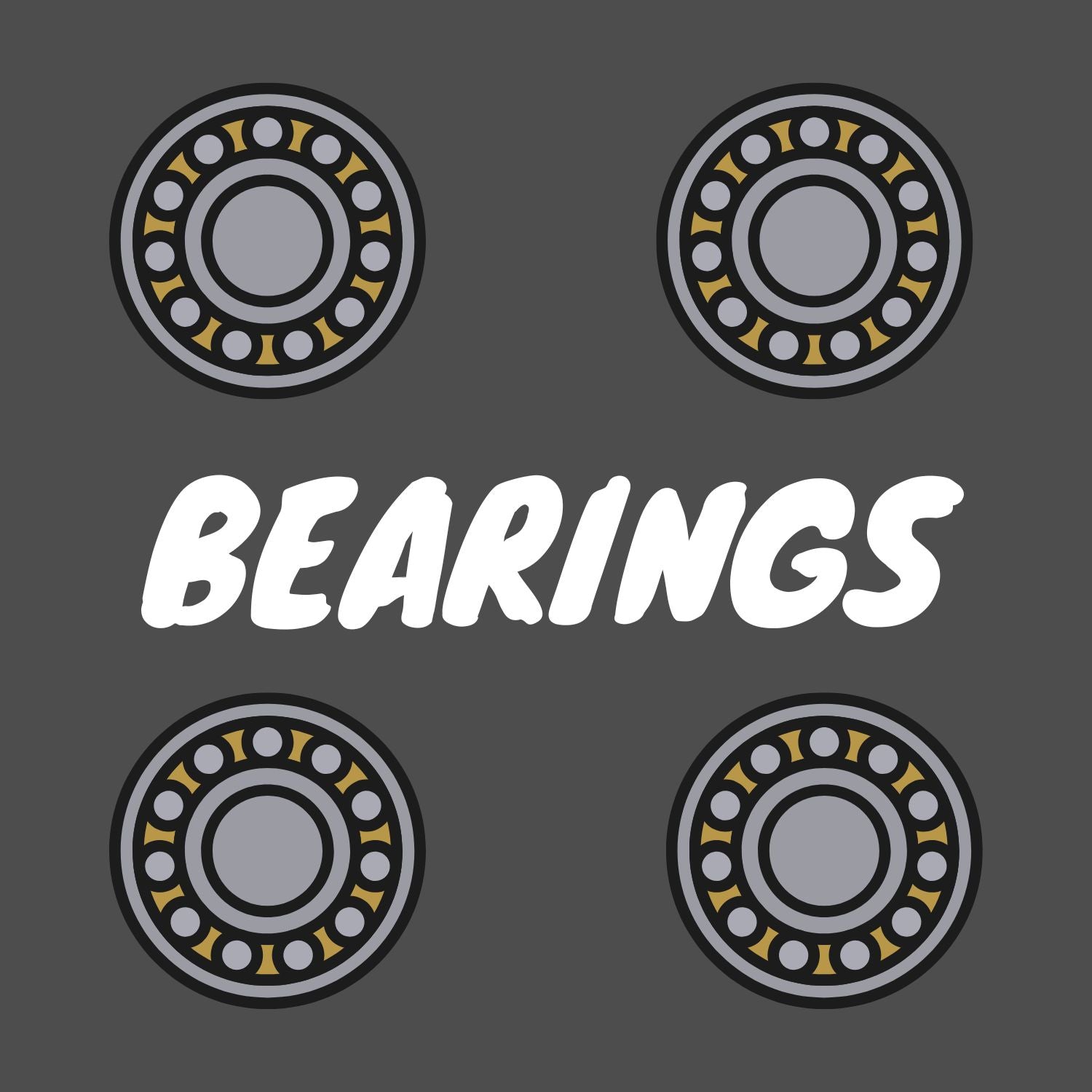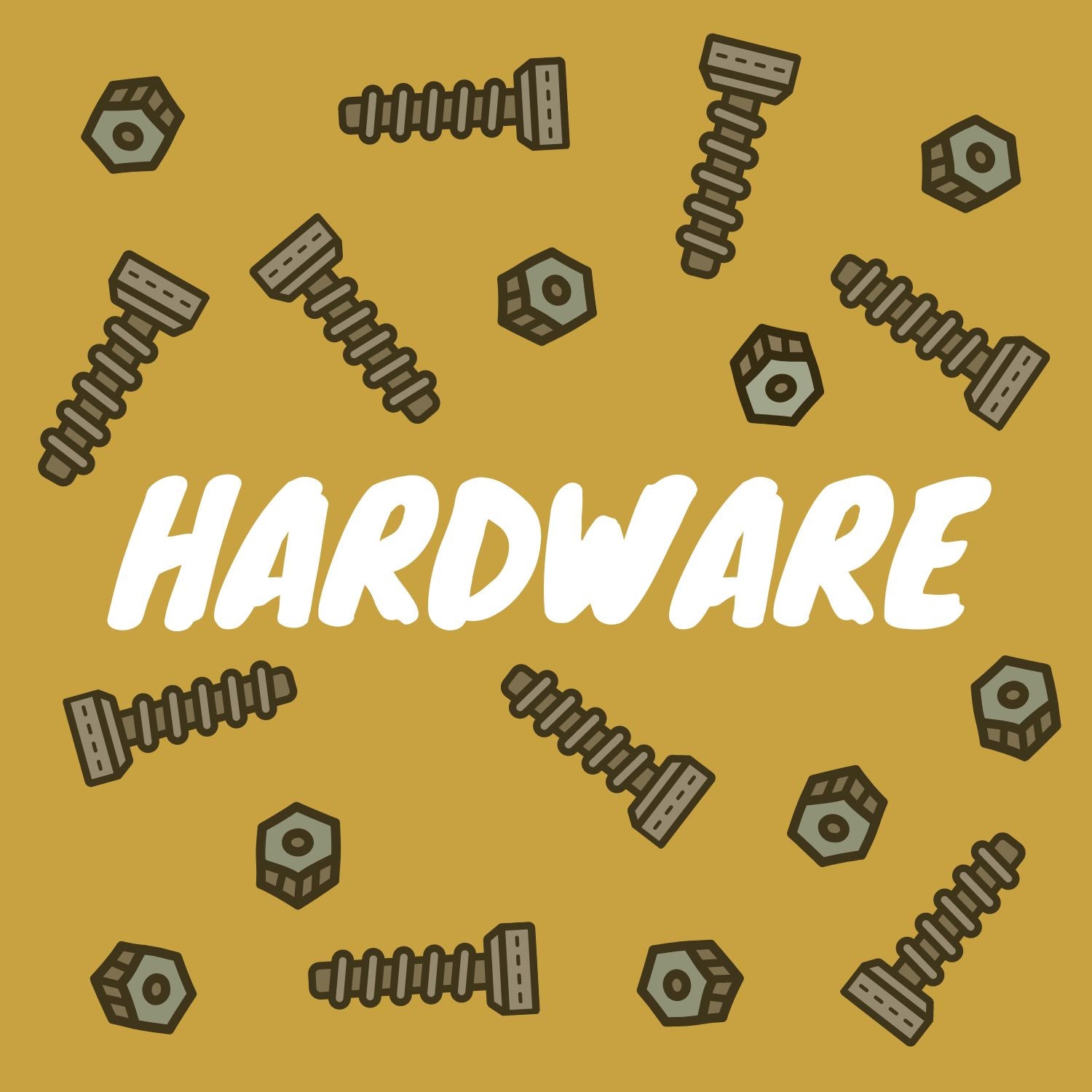A BEGINNERS GUIDE TO
CHOOSING SKATEBOARD COMPONENTS
Some newer skaters might opt for a skateboard that's pre-built, called a complete. But setting up your own gives you much more freedom to customize it for you. We know the options can be pretty overwhelming and confusing. This blog will cover the basics on skateboard components and how to select them.
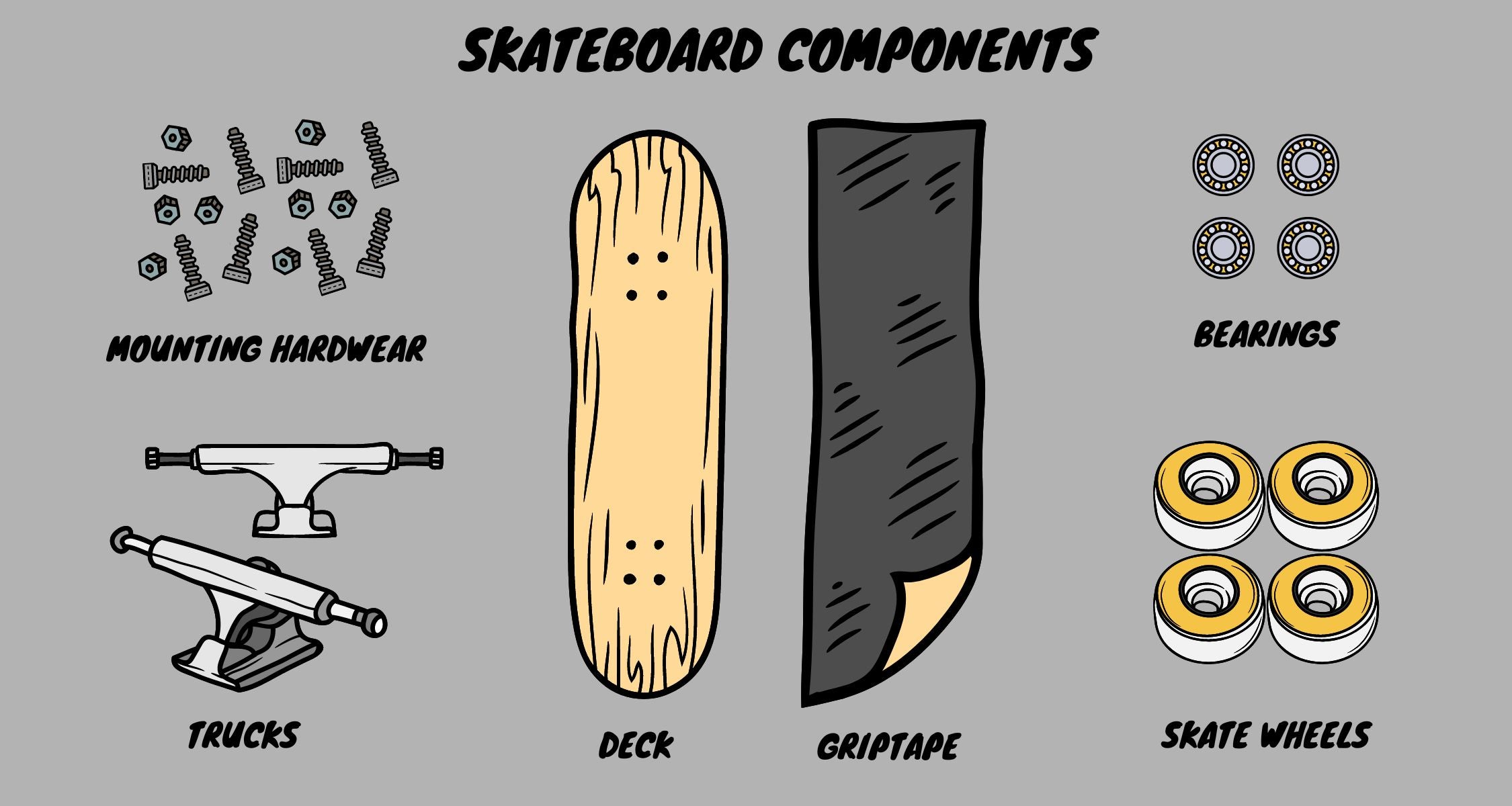
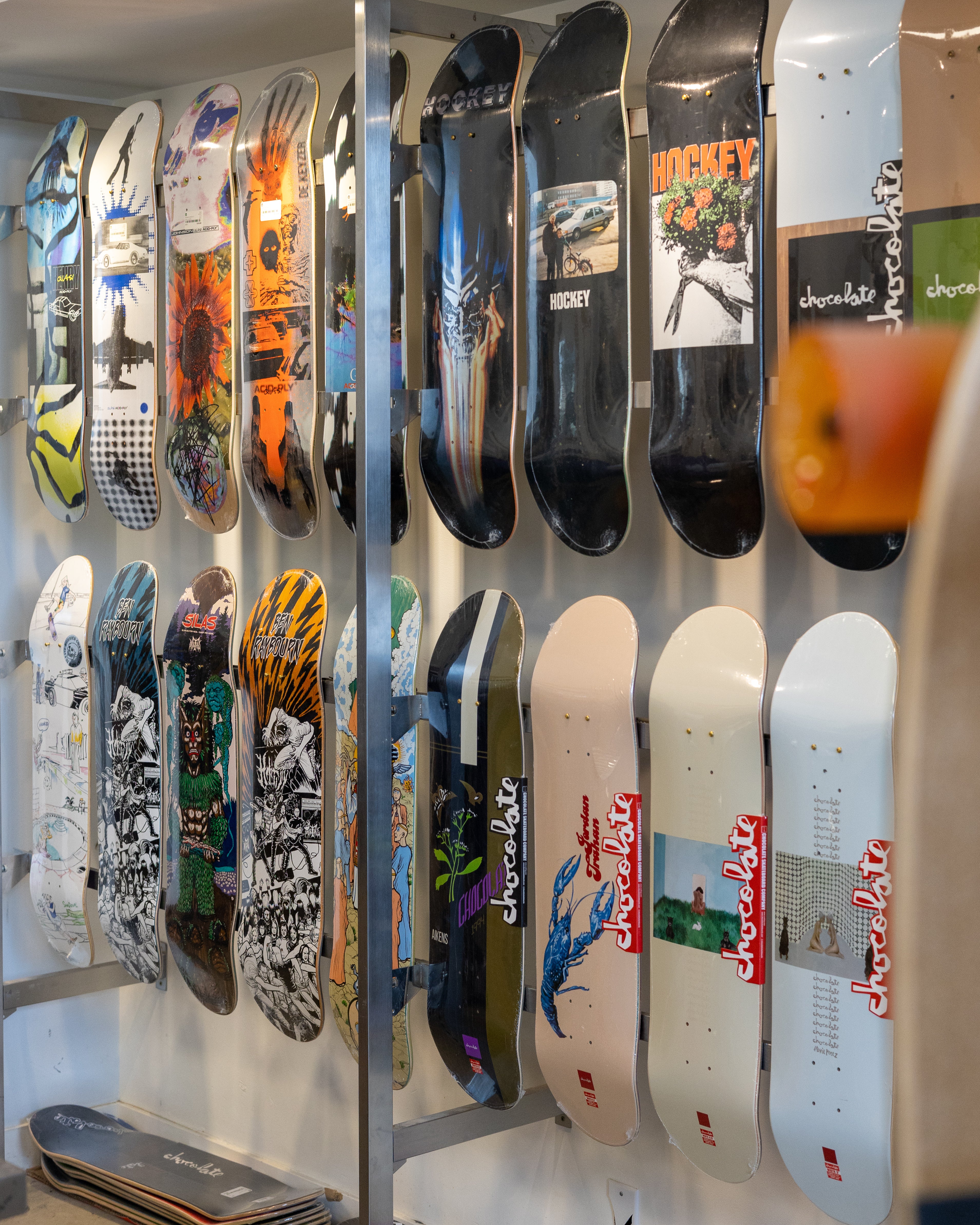
SKATE DECK BASICS
What you see on our skate wall is mostly classic popsicle shaped skate decks. This is the most versatile choice for both street and park skateboarding and can used by all abilities. This classic deck shape is what we will be focusing on. They typically feature a classic 7-ply construction, made up of seven thin layers of maple wood veneer. Maple is strong, durable and offers good pop, making it a great material for skateboards. The veneers are pressed and glued together with strong adhesives or resin and then shaped.
CHOOSING YOUR SIZE
Skate decks are sold by size, referring specifically to the width in inches. This is the main factor you'll need to consider when choosing a deck. Your shoe size, height, personal preference and skateboarding style will help determine your size. If your deck is too wide for you it will require additional effort and energy to skate and do tricks, if your deck is too narrow for you it will be difficult to balance.
7.5" to 8.5" - Suitable deck size for those skating streets and executing technical tricks. Wider decks in this range have great stability for transition skating in parks and bowls while still having the flexibility to execute tricks. This width range is good for a little bit of everything. If you are brand new to skating or unsure of what type of riding you'll be doing, select a deck between 7.75” and 8.25” for the most flexibility while you find your style. If you have a larger shoe size try something on the wider side and if you have a smaller shoe size try something on the narrower side. As you start skating you’ll quickly get an idea of what is most comfortable for you and what suits your style.
8.5" and up - These deck sizes will provide even more stability which is perfect for vert, bowls and cruising. They are generally more difficult to do flip tricks but to each their own!
SHOP DECKSTRUCK SIZE CHARTS
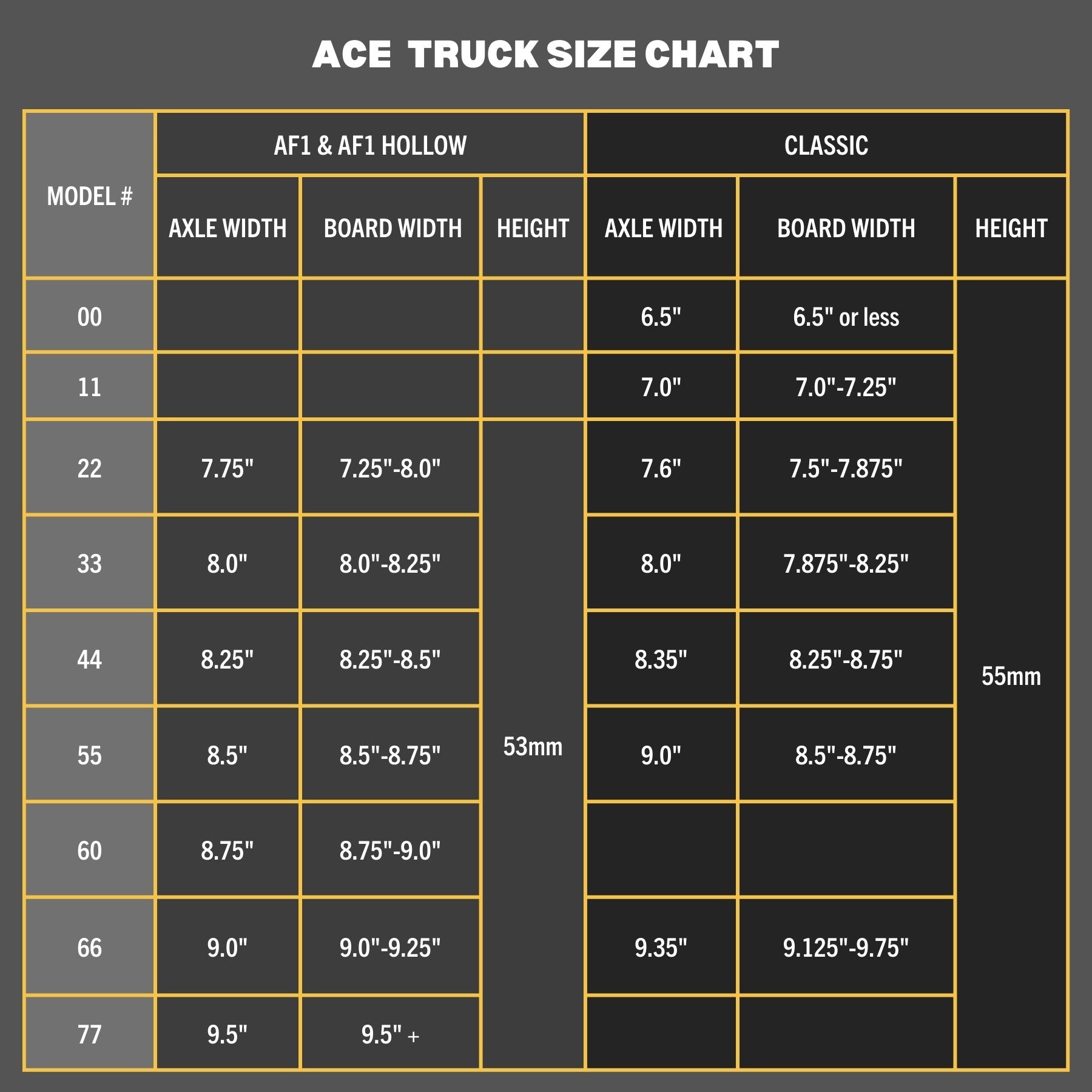
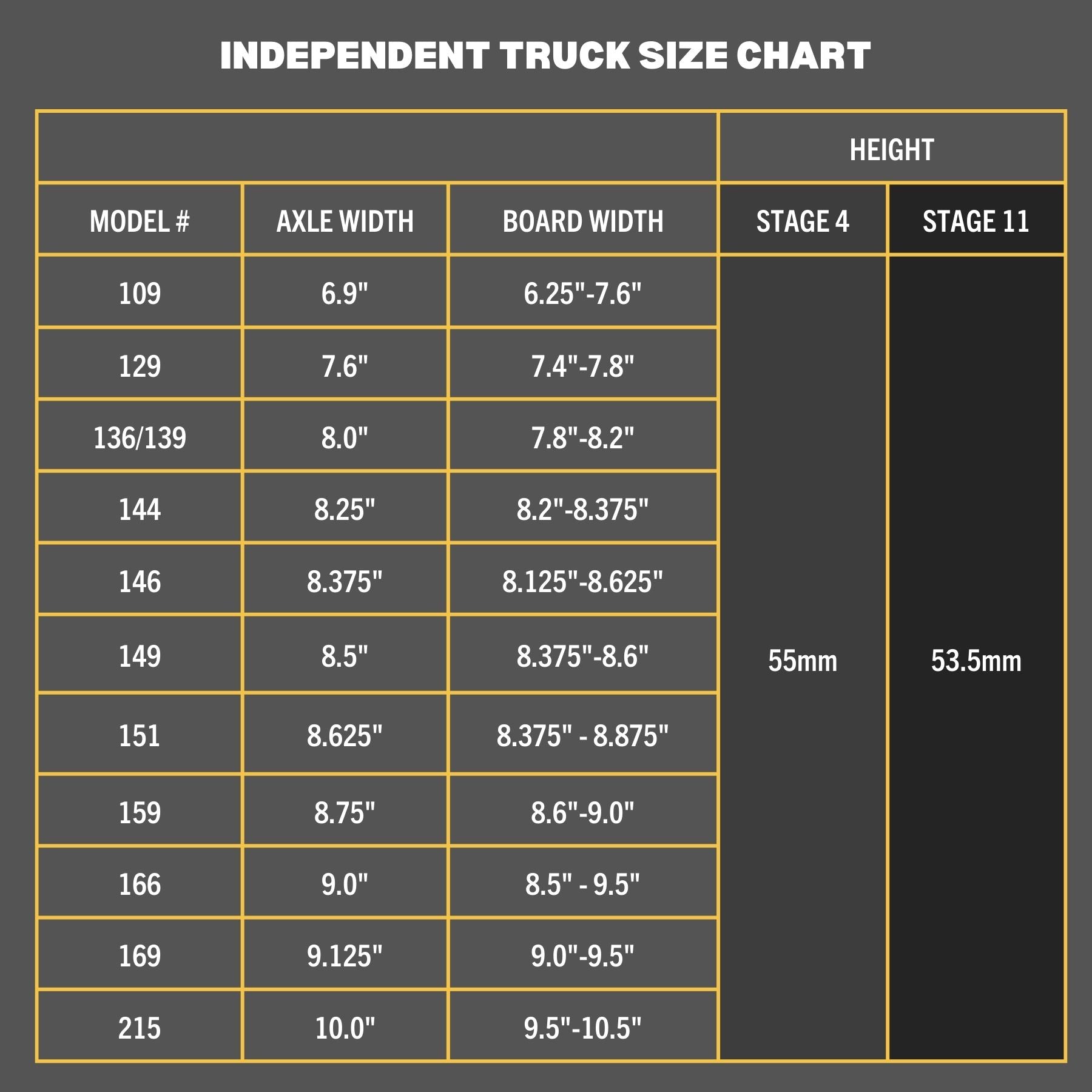
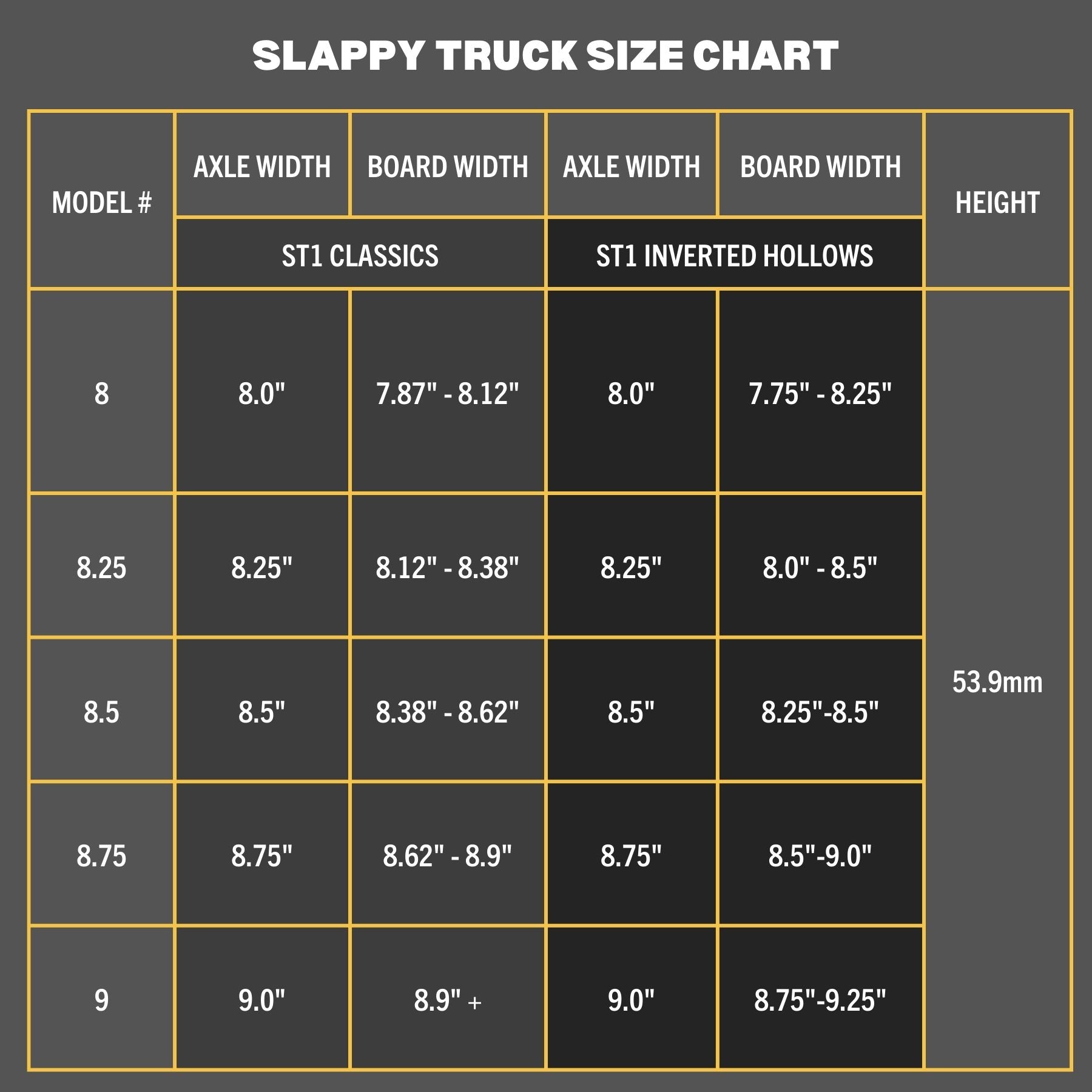
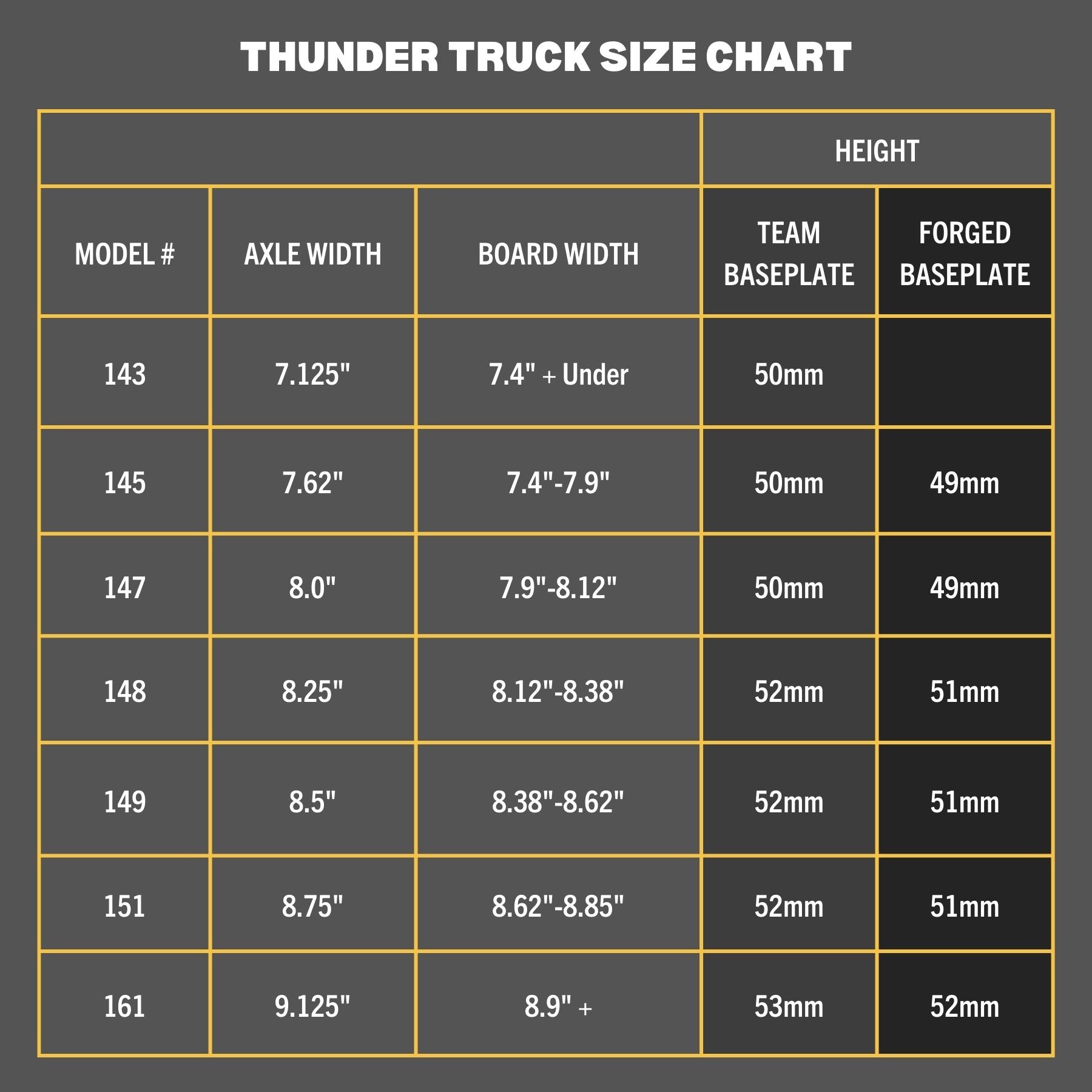
CHOOSING WHEELS
There are plenty of options when it comes to selecting wheels for skateboarding. Wheel Durometer refers to the hardness of the wheel. Generally, harder wheels will allow you to go faster, and softer wheels provide more grip which can slow you down. Even the smallest adjustment in your wheel type can dramatically change how your board feels and rides.
Which size wheel is best for your style of riding? Below is a breakdown of wheel differences, so you can confidently choose.
As far as wheel size, the larger the diameter the faster the wheel but it will also be slightly heavier and raise you higher off the ground. Smaller wheels will weigh less and will be easier to maneuver.
Different size wheels are beneficial for different types of riding:
- 49-52mm -Technical street skating
- 52-60mm- All around skating (52-55mm is a great place to start for learning the basics)
- 60-65mm- Transition skating for bowls and park
- 65-70mm- Cruiser and longboard styles
- 70mm and up- Downhill longboard wheels
Durometer refers to the hardness of the wheels. Durometer is most commonly measured using the “A” scale. On the wheel packaging or description will typically have a number followed by the letter A. The larger the number the higher the durometer and the harder the wheel. Seems simple right? Well let’s throw a wrench in the mix. Some brands make wheels that use a “B” scale. These wheels are typically the hardest wheels you can get your hands on. Not to worry, there is an easy conversion to compare how these wheels compare to the traditional A scale. Just subtract 20 values below the A scale (IE 101A would equal an 81B)
Hard Wheels are more responsive and allow you to feel everything you are rolling over. Since they are more responsive you will be able to pop into your tricks with ease. Harder wheels are better suited for smooth surfaces like skate bowls and for executing tricks. 98A and above would be hard wheels suitable for this type of technical riding.
Soft Wheels will compress more, absorb pressure and grip the ground more. They will give you the feeling of a smoother ride but will require more effort to go fast. Softer wheels are typically better for cruising around. Soft wheels for cruising would have a durometer between a 78A-90A.
Bearing Basics
Skate bearings are the round metal pieces that fit inside the wheels and mount the wheels onto the truck axle. Skate bearings have universal measurements and will fit any skate wheel we stock. Within the bearing are 6-7 steel or ceramic balls that allow the bearing casing to spin. A bearing shield and rubber seal help keep debris out, but bearings need to be cleaned regularly to keep you rolling smoothly.
- Steel Bearings are the most common type of skate bearing because they are durable and affordable. The quality of steel does vary and generally more expensive bearings are higher quality. Steel bearings are more susceptible to rust if they get wet, so keeping them dry and well oiled is a good idea.
- Ceramic Bearings are extremely smooth and offer a frictionless ride but are a pricier option than steel. The ceramic balls are less susceptible to damage from water, but can be more fragile depending what the retainer material is. They may not hold up as well with high impact skating over time but are a great choice for a cruiser.
Hardware Basics
You'll need to connect your deck to your trucks using nuts and bolts called mounting hardware. These are usually sold in a pack that includes 8 nuts and 8 bolts. A set of 4 for each truck.
- Sizes for hardware range from 7/8" to 2" but most classic skateboard set ups require 1" standard hardware. This is the most common size we carry.
- Drive Types include allen and phillips. Allen type bolts requrie an allen key, and phillips type bolts require a phillips head screwdriver. This is mostly a personal preference.
SHOP SKATE 2025
We have plenty of options to bring your dream set up to life. If you're having trouble deciding or have any questions, pop by one of the shops and we'll get you sorted.

